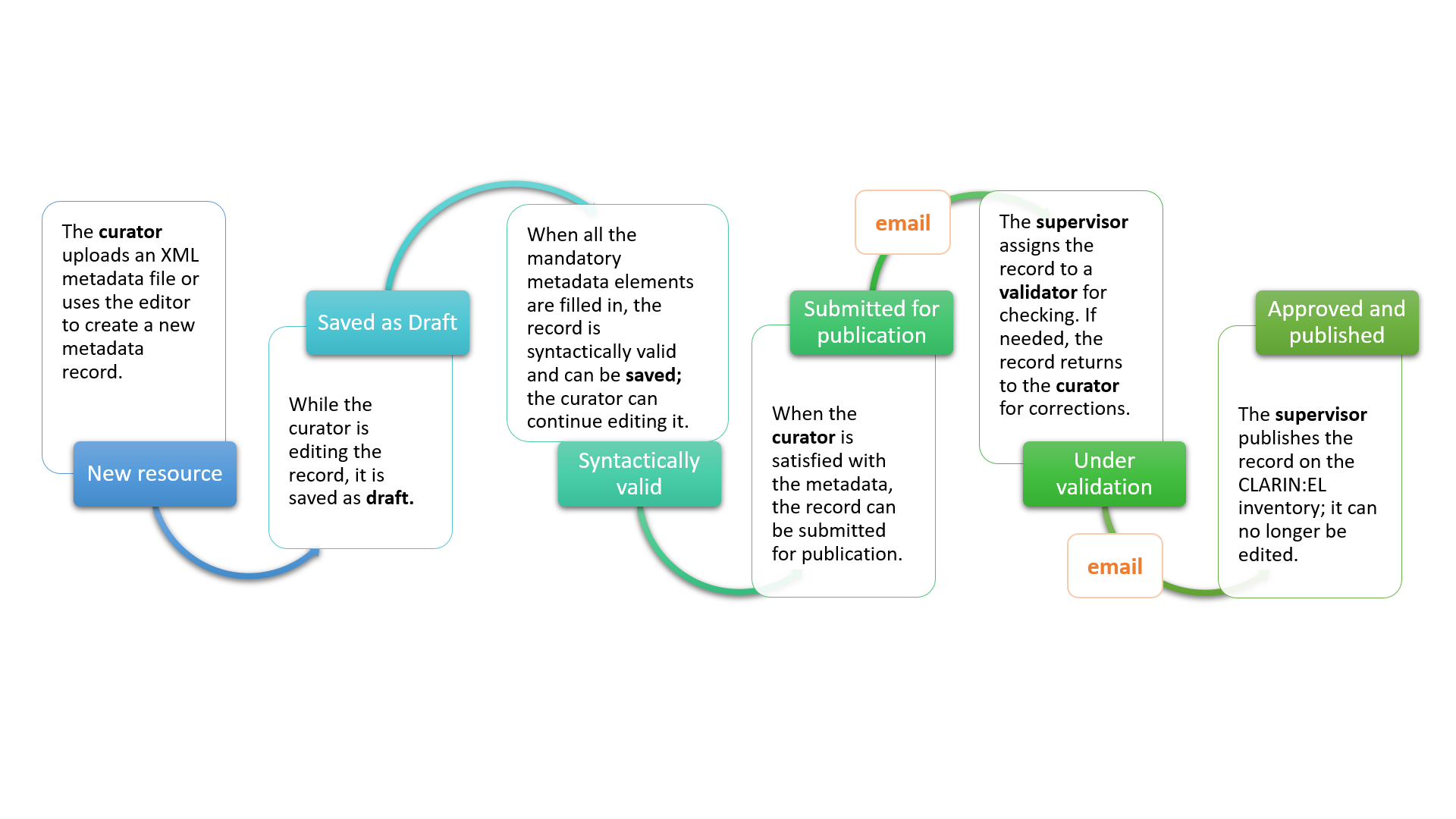The lifecycle of a resource¶
CLARIN:EL is an infrastructure for language resources and tools/services which reside in the repositories of the members of the CLARIN:EL network; they are harvested and presented in the central inventory. A resource (i.e., a metadata record and, optionally, content files uploaded with it) goes through a set of states in the process of being prepared for publication on the inventory, as depicted in the following figure:
The states are:
new resource: A curator creates a resource, by creating a metadata record through the metadata editor 1 or by uploading an XML metadata file and, optionally, content files.
draft (internal): When using the interactive editor, the curator can save 2 the metadata record as draft, even without filling all mandatory elements; only compliance as to the data type of the elements is checked (e.g. elements that take URL must be filled in with the accepted pattern).
syntactically valid (ingested): The system checks that the metadata record complies with the CLARIN:EL metadata schema and all mandatory elements are filled in. The curator can continue to edit it until satisfied with the description and can then submit it for publication.
submitted (assigned for validation): Once the curator submits the resource for publication, the record is no longer editable. The supervisor receives an email to assign 3 validators. Depending on the resource type (and the uploaded content files, if any), the resource is checked by the metadata and legal validator 4. The validation aims to check the consistency of the description; it doesn’t include any qualitative evaluation. When validators identify a problem, they contact the curator for further information and may ask the curator to edit the metadata; in such cases, the status of the resource is changed to syntactically valid again and the curator is notified to make the appropriate amendments.
published: When the validator(s) have approved a resource, the supervisor is notified by email and must publish it. After being made visible in the CLARIN:EL inventory the metadata record cannot be edited any more. It can return to the syntactically valid status only if (requested to be) unpublished.
Attention
Only the metadata records created via the editor can be saved as draft. The XML metadata files cannot be imported unless they are syntactically valid (which is the status they are automatically set to).
- 1
Henceforth editor.
- 2
See the differences in save as draft and save here.
- 3
When there are more than one supervisors in a repository, one should first be assigned to the resource. See here how to do this. Then, the supervisor must choose and assign validators.
- 4
When no content files have been uploaded, the resource is considered automatically legally valid.
